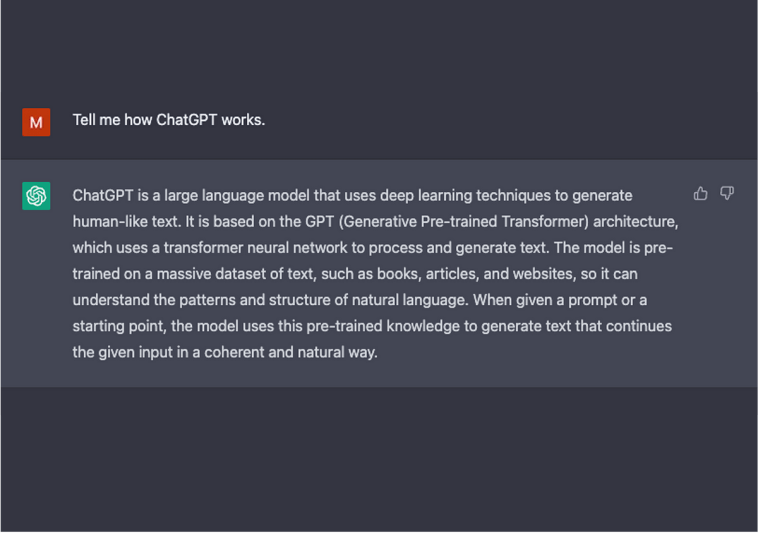Introduction.
As AI tools continue to expand what’s possible in technology, OpenAI’s ChatGPT API stands out as a fantastic option for integrating conversational AI into websites, apps, and just about any service you can imagine.
Whether you’re developing a chatbot, creating an automated customer support solution, or looking to add some AI-driven interactivity, the ChatGPT API can help make that happen. But if you’re not already familiar with APIs or coding, diving in can feel like a big step.
This guide will help you get started with using the ChatGPT API effectively. I’ll walk you through the setup process, break down what each step means, discuss the pros and cons of using this API, and answer some common questions along the way.
By the end, you should feel confident about using ChatGPT in your own project and be able to explore the full potential of what this powerful tool has to offer.
Understanding the ChatGPT API
The ChatGPT API allows you to integrate OpenAI’s conversational AI directly into your application or website, meaning users can interact with the model as they would with a human in a chat.
This API is part of OpenAI’s suite of tools, which includes other models (like DALL-E for images and Codex for code), but for this guide, I’ll focus solely on ChatGPT.
The API works by allowing you to send a series of requests to OpenAI’s servers. These requests contain text inputs, and the AI processes them to generate responses that you can then display to your users.
You get flexibility in controlling the tone, specificity, and behaviour of ChatGPT’s responses by configuring certain parameters.
How Do I Use ChatGPT API?
To get started with ChatGPT API, follow these steps:
1. Sign Up for an API Key.
- Head over to OpenAI’s API page to create an account if you don’t have one. After logging in, you’ll receive an API key that’s essential for any API interaction.
- Safeguard this key—it’s unique to you, and any usage linked to it will be billed directly to your account.
2. Setting Up Your Environment
- To interact with the API, you’ll need a programming environment where you can write and execute code. Many people use Python because it’s straightforward and widely supported.
- If Python’s your choice, install the OpenAI package by running:
3. Understanding the API Request Format
- Each time you send text to the ChatGPT API, it’s called a request. In Python, you can create this request by importing the OpenAI package and defining the parameters of your request.
- Here’s a basic example:
- Parameters:
- model: Sets which version of ChatGPT you want to use, such as
"gpt-3.5-turbo"or"gpt-4". - messages: Holds the conversation context, where each message includes a role (
system,user, orassistant) and content (the text of the message).
- model: Sets which version of ChatGPT you want to use, such as
4. Configuring Parameters
- You have control over various settings, like:
- Temperature: Affects randomness in responses. Higher values (e.g., 0.8) make responses more diverse; lower values (e.g., 0.2) make them more focused.
- Max Tokens: Limits the length of responses, which can help keep conversations brief if that’s what you want.
5. Error Handling and Limits
- APIs can be tricky sometimes due to rate limits, unexpected inputs, or connection errors. Build some error handling into your code to manage these issues gracefully.
- If you run into
RateLimitErrororAuthenticationError, check your account settings and usage stats on OpenAI’s platform.
Pros and Cons of Using ChatGPT API
Like any tool, the ChatGPT API has its upsides and downsides. Here are some key points:
Pros:
- Flexibility: You can adjust the model’s tone, style, and specificity, which is useful across different use cases.
- Improves User Experience: Users get quick responses and engaging interactions.
- Time-Saving: For businesses, it can handle FAQs, basic troubleshooting, and more, freeing up human resources.
Cons:
- Cost: Usage costs can add up, especially if you have high traffic or complex requirements.
- Context Limitations: The API doesn’t inherently remember conversations long-term, so it can lose context in lengthy dialogues.
- Reliance on Internet Access: The API needs internet connectivity, so it won’t work offline or if there’s a connectivity issue.
Frequently Asked Questions
Q1: What’s the difference between text-davinci-003 and gpt-3.5-turbo models?
- Both are high-quality models, but
gpt-3.5-turbois optimized for chat and conversational tasks and typically more cost-effective for such uses.text-davinci-003might perform better for specific text generation tasks outside of chat contexts.
Q2: How can I keep my API usage within budget?
- OpenAI offers options for setting usage caps on your account. Additionally, you can control costs by reducing response length or using a smaller model where feasible.
Q3: Can I use this API to build a chatbot for customer service?
- Absolutely! Many companies use the ChatGPT API to build customer service bots. However, always test the model’s responses for accuracy and appropriateness, especially if it’s handling sensitive or complex inquiries.
Q4: How do I integrate this API with other platforms, like my website?
- You can integrate the API by writing backend code (using languages like Python, JavaScript, or Node.js) that interacts with the API and connects it to your front-end user interface. This lets users engage directly from your site.
Conclusion.
Learning how to use the ChatGPT API opens up a lot of possibilities, from automating parts of customer service to adding unique, conversational elements to your app or website.
Once you’re familiar with its setup and limitations, it’s a powerful tool for personal and professional projects alike.
If you’re thinking of integrating it, consider how you want it to interact with your users, test different configurations, and track your costs to avoid surprises.
What kind of application or project would you use the ChatGPT API for?





GIPHY App Key not set. Please check settings